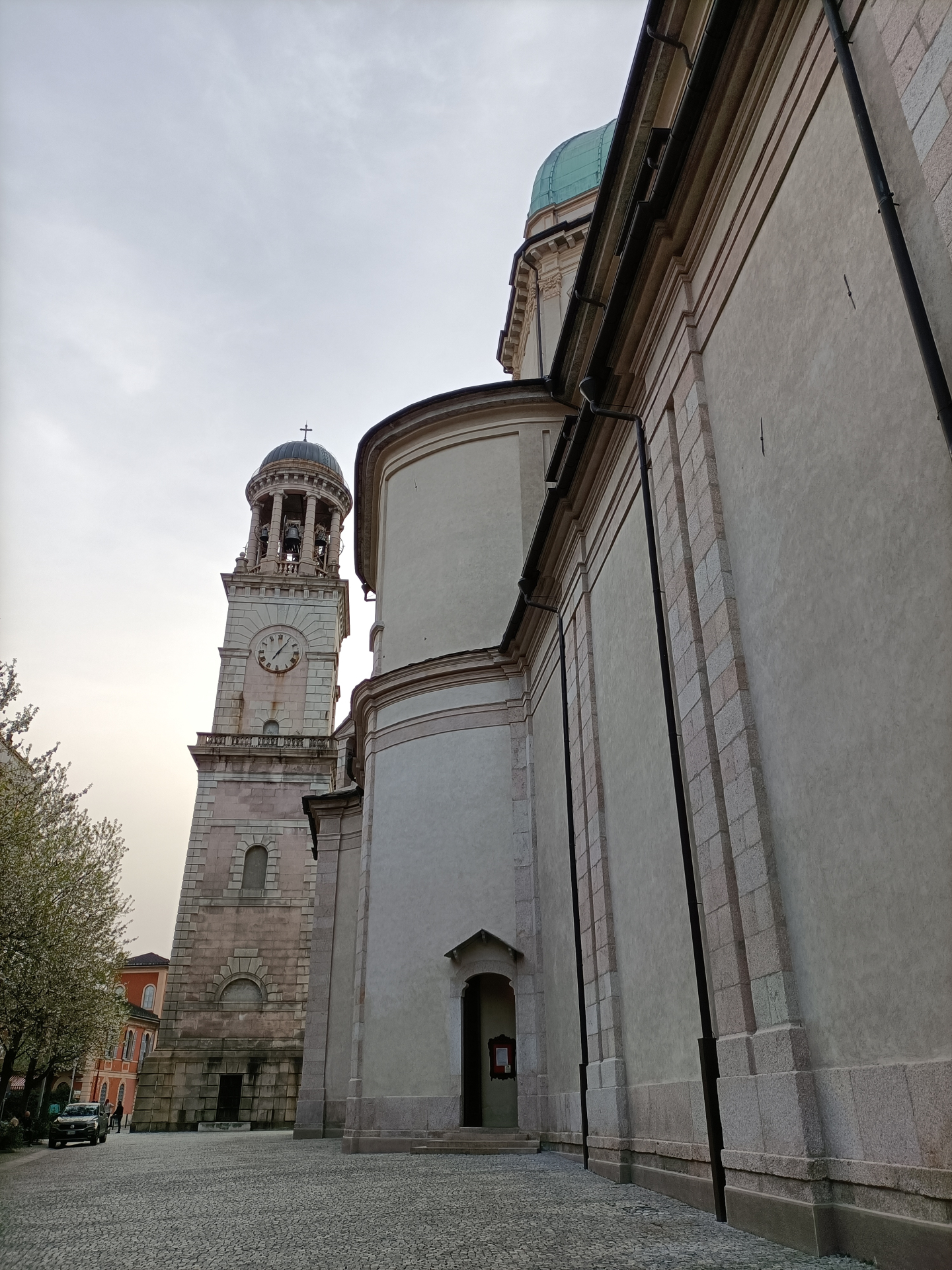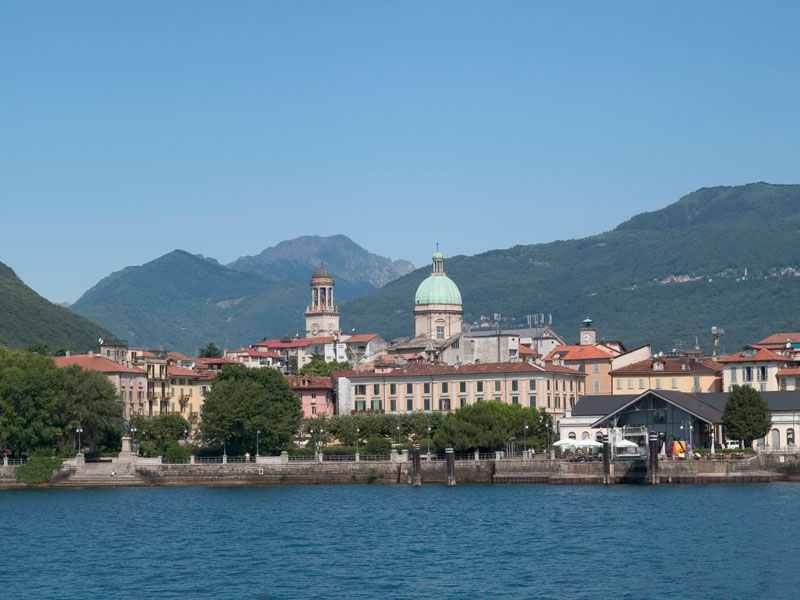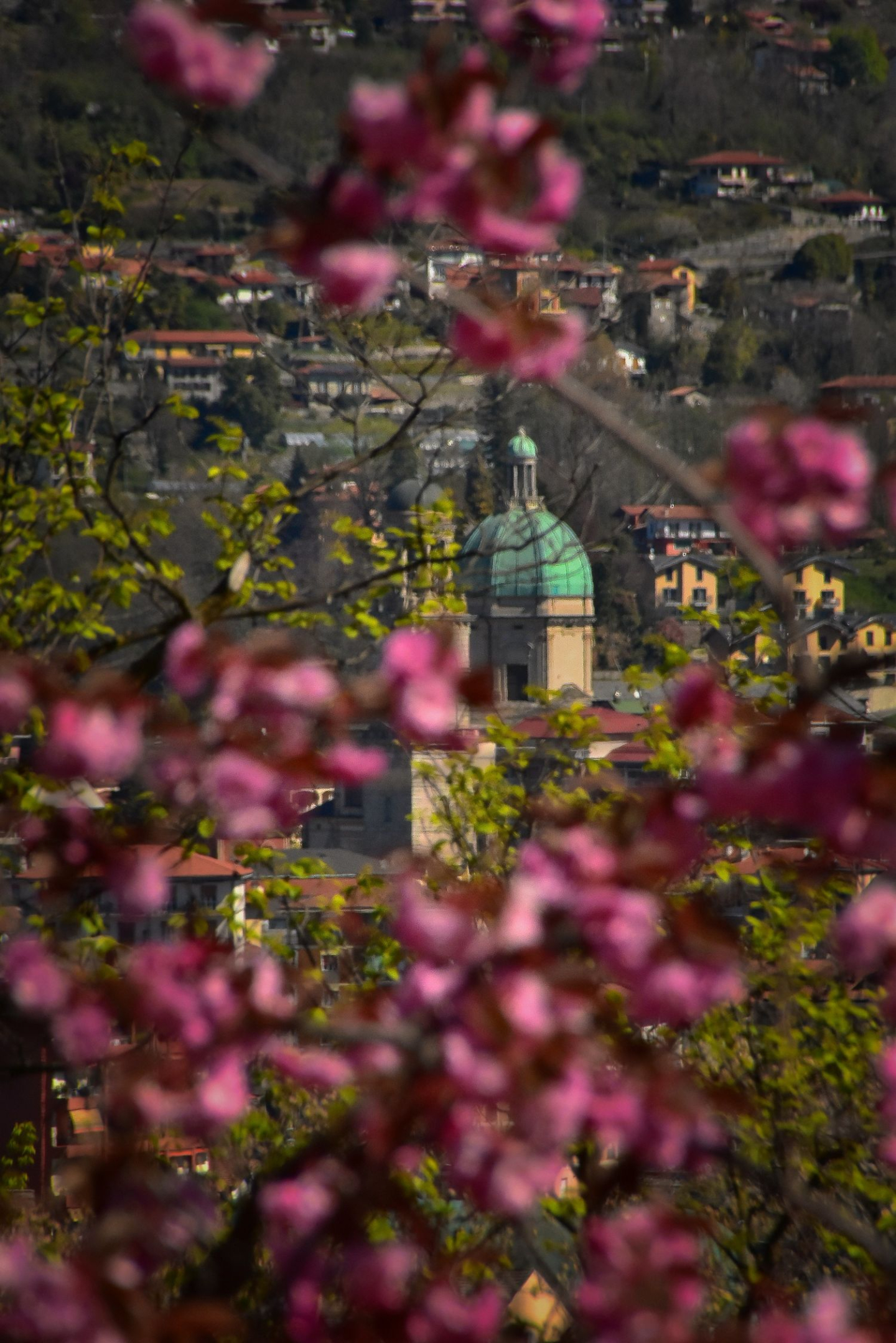Basilica of San Vittore
An unmissable sight for anyone arriving at Intra by ferry: the large, green dome, taller than the nearby bell tower, that reigns over the skyline of the Verbanese hamlet. It is the dome of the Collegiate Basilica of San Vittore that soars above Intra’s historic centre, and which became Verbania’s main church in 1992 when San Vittore was proclaimed as patron saint of the city. Furthermore, on May 8th, the feast of the patron saint, the ancient tradition of the solemn procession from the basilica to the port is always held, and concludes with the evocative blessing of the lake.
The church appears imposing, almost disproportionate in size to the piazza where it stands and to the surrounding buildings, this is mainly because it is relatively new, having been constructed between the seventeenth and late nineteenth centuries.
It replaced a pre-existing Romanesque church, which is cited in a manuscript dated 1031, as a reference point for the parish serving a large part of the Verbano area.
The first works relating to the construction of the church, as we know it today, date back to the early seventeenth century. They were completed over two hundred years later with the positioning of the new dome, initially protected by a lead cover and then, due to wear and tear, replaced with the current copper one. The inauguration of the renovated church was held on September 8th, 1889.
Originally in the centre of the churchyard, now Piazza San Vittore, was a fifteenth-century bell tower which, as the works progressed, proved to be increasingly inadequate both for its cumbersome dimensions and for the fact that it was no longer in harmony with the rest of the sanctuary.
Thus, from 1840 to 1877, a new bell tower was erected and completed in 1878 with the installation of eight bells cast by the Pasquale Mazzola foundry in Valduggia.
The Church of San Vittore has a single nave with three chapels on each side. Also striking is the church’s entrance with the tympanum supported by four columns reminiscent of a Greek temple.
Its interior conserves some precious artworks by Scapigliatura artist Daniele Ranzoni who, previous to becoming the driving force of the movement - the symbol of the Milanese bohemians - frescoed the lunette of the second chapel on the right with scenes from Preaching of the Baptist, a painting of particular interest that has been recently restored. Also important are works from the 1400s and 1500s recovered from the previous church, and a 16th-century baptismal font.
The Collegiate also houses the largest organ in Verbania, with its three manuals of 61 notes, a 32-key pedalboard and 39 nominal registers. Built by the Serassi organ building family in the late 18th century, it was restored and modernized in 1932 by Vincenzo Mascioni with the introduction of electro-pneumatic transmission.
(Credit: https://viviverbania.it/)





